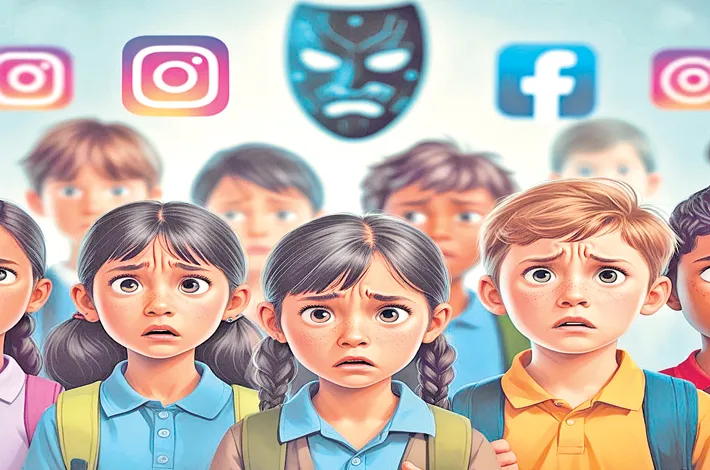Schools’ social media posts put kids at risk
25-11-2025 12:00:00 AM

HEMA SINGULURI I hyderabad
In Hyderabad, a growing trend in schools has raised eyebrows as teachers and staff regularly record classroom activities, cultural events, lessons, and “fun reels,” often featuring students’ faces, and post them on social media. While intended to highlight learning and creativity, experts and parents are increasingly warning about the risks to children’s privacy, consent, and digital safety.
With AI-driven deepfake tools easily accessible and social media content spreading uncontrollably, questions arise as to why children are becoming frequent participants in online feeds. Risks include exposure to inappropriate content, cyberbullying, and the creation of a permanent digital footprint that could be misused by predators or fraudsters. Many of these dangers can arise without full parental awareness or consent.
Videos of children online can create a permanent record that they cannot control, potentially impacting their future. Personal details such as school locations, uniforms, or classroom environments can inadvertently make children vulnerable. Unlike AI-generated images, real pictures of children in the wrong hands—like cybercriminals—pose a serious threat.
Social media reactions reflect these concerns. Many users argue that posting children’s videos online constitutes a privacy breach, even with parental consent. One Instagram comment under a school reel stated, “Children shouldn’t be content for social media engagement.” Another warned, “Anyone can download these videos and misuse them, especially with deepfake technology now.”
Experts and concerned users stress the importance of awareness regarding social and online predators. While some parents and teachers argue that such videos help children build confidence and creativity, others caution that repeated appearances in online reels can expose children to multiple unknown viewers, increasing potential risks.
Spandana G, mother of two primary school children, recently realized that videos were being shot frequently at her children’s school, sometimes without proper consent for each reel. “I wasn’t aware of many dangers in the digital world and AI, so I usually thought videos wouldn’t harm,” she said. She added that she now notices her children’s faces appearing in reels posted by staff, sometimes during lessons, raising concerns about whether children understand what is being recorded and where it could end up.
Bhagya Raj S, a resident of Kukatpally and parent of a 7-year-old, said, “I didn’t have any objections earlier, but I’m concerned now. Teachers and staff at my son’s school shoot activity reels and post them online. Influencers among them post too many videos, and I can’t tell how many involve my son’s face.” He stressed that videos posted on public accounts can be easily shared, downloaded, and reshared, creating digital risks.
Lack of consent and control often arises because not every parent is aware of how many videos are posted online or how many include their child. Young children cannot fully understand or consent to their images being used this way. This raises ethical and legal concerns about children’s right to privacy. Moreover, once a video is online, it is difficult to remove entirely, which can be stressful or damaging for children who may later regret appearing in it.
The Children’s Online Privacy Protection Act (COPPA) exists to protect children’s data online, but it primarily applies to websites and online services that collect information—not to individual social media posts by teachers or schools. This legal gap leaves many children exposed to risks that parents may not fully anticipate.
As schools continue to post videos to showcase student activities, the need for awareness about digital safety becomes critical. Parents must understand the potential long-term consequences of their children appearing online and advocate for safer policies at schools. Children’s participation should be voluntary, consent-based, and carefully monitored, and schools should ensure that content is shared only in controlled or private channels rather than public social media platforms.








